For projects with complex terrain, the most crucial step when selecting an available area is to find areas that meet the sunlight conditions.
The conventional method for sunshine filtering typically follows the principle of not being blocked by other mountains from 9 am to 3 pm throughout the year. When the arrangement capacity is insufficient, the time range will be shortened.
There are the following issues with this analysis method:
1. It can only conduct preliminary quantitative analysis of direct radiation, but cannot analyze the scattering and reflection losses caused by mountain obstruction;

2. For complex terrain, the sunshine periods of the mountains are not symmetrical, making it difficult to handle;
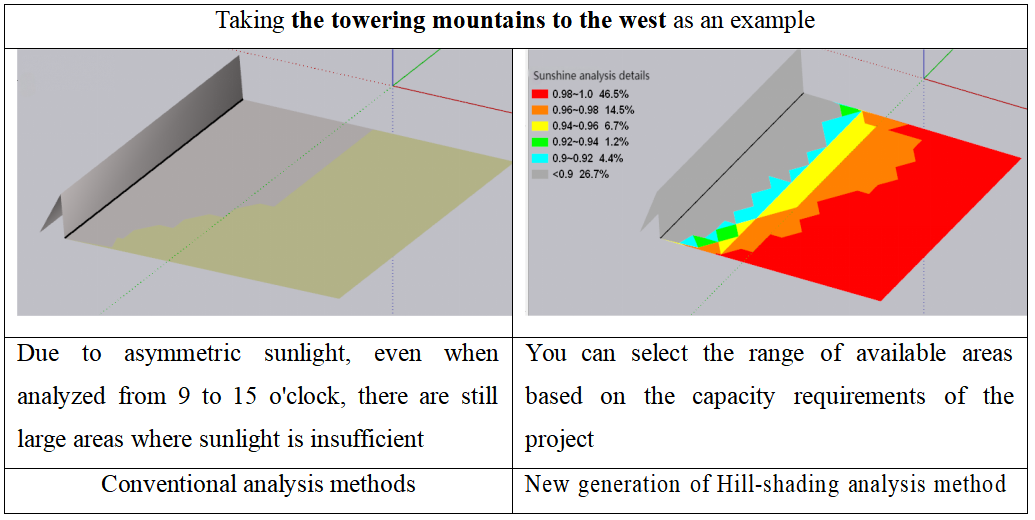
3. It is not possible to Analyze the occlusion loss outside the specified time period.
The new generation of Hill-shading analysis method directly targets the ultimate goal of Hill-shading analysis, which is to select the areas that receive the maximum annual total radiation on the arrays after they are finally arranged.
To this end, we have carried out the calculations according to the following steps:
1) Virtually arrange arrays throughout the mountains;
2) Calculate the total annual radiation received on the Array surface;
3) Calculate the annual near-shadow obstruction loss caused by other mountains at this location, including direct, diffuse, and reflected losses;
4) Calculate the final annual total radiation received on the Array surface;
5) Perform sunshine Start on mountains based on the final annual total radiation.
Case Analysis:
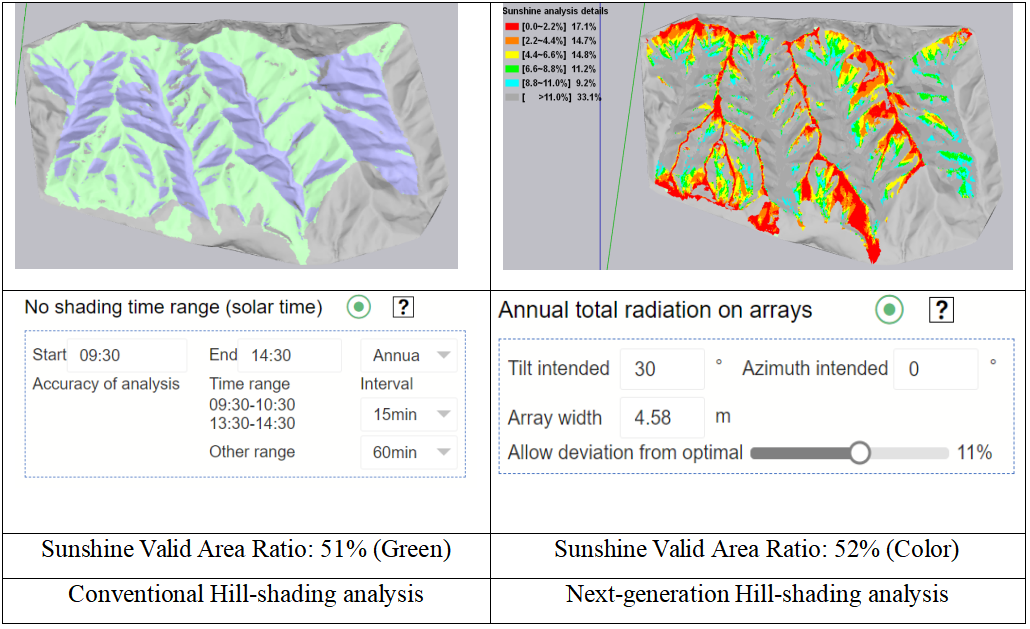
To further compare the differences between the two, we arranged based on the above two types of Hill-shading analysis, with a tilt angle of 30° and an azimuth angle of 0°, and calculated the final power generation. The relevant comparison is as follows:
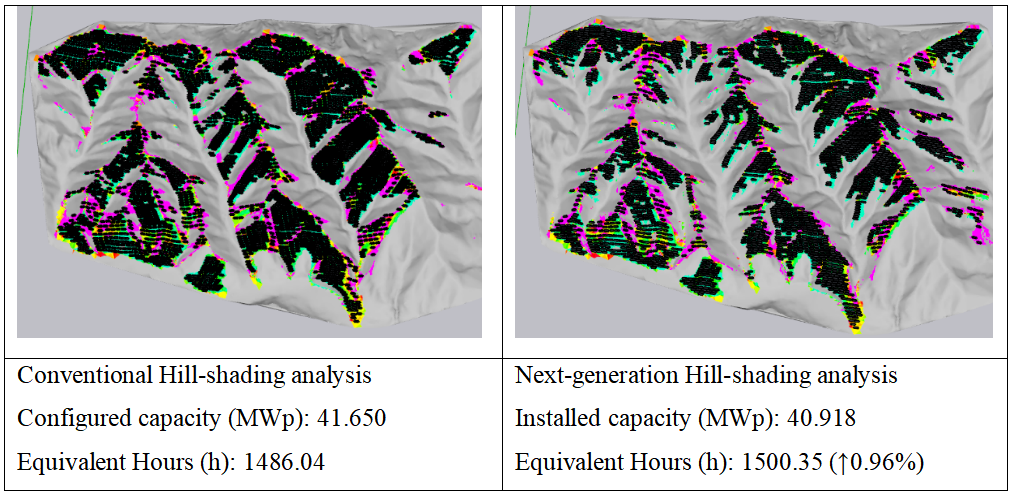
We can verify the accuracy of Hill-shading analysis through the analysis of Arrays shading loss:
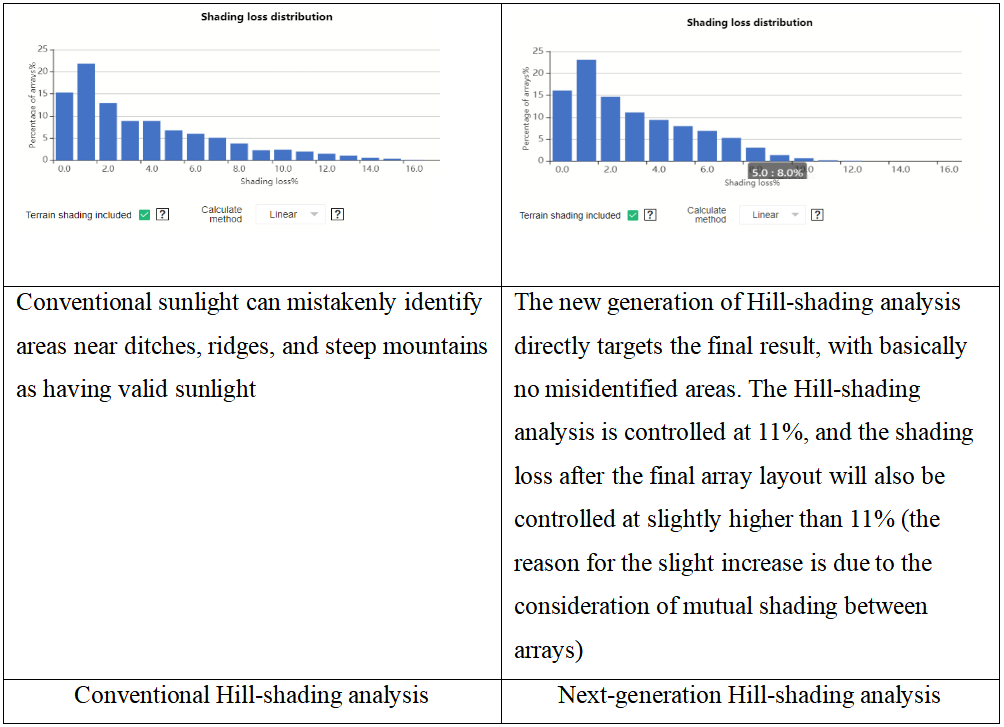
When a project does not adopt a uniform orientation layout, the aforementioned new generation of Hill-shading analysis method can also be used, in which we use the final total radiation on the horizontal plane as the benchmark.
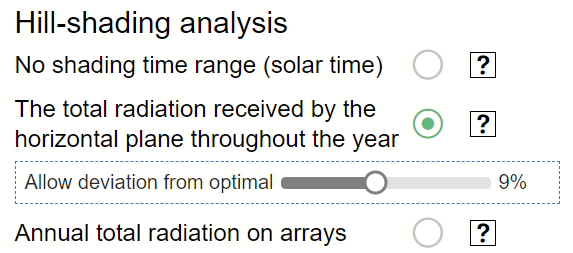
Summary: The new generation of Hill-shading analysis method, which directly selects the site based on the annual total radiation received on the final Place Array, is significantly superior to the conventional Hill-shading analysis method and should be adopted as the mainstream analysis method.
Article Comments(0)